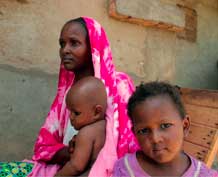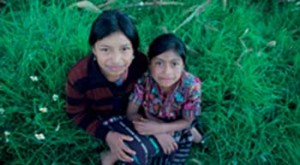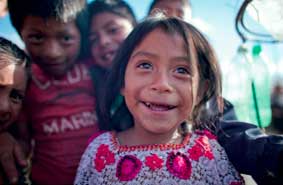Report of 28 May 2013 on violence committed against girls, teenage girls and young women from indigenous communities – “Breaking the Silence on Violence against Indigenous Girls, Adolescents and Young Women: A call to action based on an overview of existing evidence from Africa, Asia Pacific and Latin America“.
The context within which this report was written:
 The report is the product of collaboration between several organisations, namely UN Women, the United Nations Population Fund, the WHO, and the Special Representative of the United Nations Secretary General on Violence against Children, in coordination with UNICEF.
The report is the product of collaboration between several organisations, namely UN Women, the United Nations Population Fund, the WHO, and the Special Representative of the United Nations Secretary General on Violence against Children, in coordination with UNICEF.
It is the first attempt to gather evidence of violence committed against girls, teenage girls and woman from indigenous communities.
From a qualitative and quantitative viewpoint, little is known about this violence, and this study serves to highlight its causes, concrete acts of violence and the measures to be implemented in order to reduce it.
The object of study of this report:
The General Assembly of the United Nations recalled that “gender equality is of fundamental importance for achieving sustained and inclusive economic growth, poverty eradication and sustainable development” [1]. This report on violence committed against women and young girls from indigenous communities falls in line with this course of action.
The study mainly focuses on these acts of violence, for several reasons. Firstly, while indigenous communities in general experience discrimination, it is even more pronounced for the women in these communities.
These women and young girls suffer from multiple forms of discrimination, based on their age, gender, ethnicity and other interdependent factors all at the same time, significantly increasing their vulnerability.
The content of the report:
 The report of 28 May 2013 considers several aspects of the issue regarding this violence. First of all, it places the violence committed against women and young girls from indigenous communities within the general context of international and regional regulations.
The report of 28 May 2013 considers several aspects of the issue regarding this violence. First of all, it places the violence committed against women and young girls from indigenous communities within the general context of international and regional regulations.
This violence is then situated within the narrower context of indigenous communities. The root causes, structural causes and risk factors are identified. These include, for example, gender inequality, poverty, exclusion, an absence of recognition of indigenous communities, of their identity or even the dispossession of the land of their ancestors.
Concrete acts of violence, such as, for example, forced marriage, and sexual, physical, psychological, or even domestic violence are then studied in 3 regions: Africa, Asia Pacific and Latin America. Case studies were also conducted in 3 countries (Kenya, Philippines, Guatemala).
Following this, the report highlights the initiatives taken on a national scale for the prevention and protection against this violence and it concludes with 6 principles, including gender equality and respect for the rights of indigenous communities, together with 10 specific recommendations, such as, for example, integrating the problems of indigenous young women and young girls into national legislation.
What contribution does the report make?
It is a pragmatic report which is in continuity with the reality of violations of the rights of women and children. Not only does it develop awareness of the situation using studies based on real figures, but it also proposes concrete measures concerning access to services, prevention and efficiency within the institutions in question, in order to remedy these violations by taking into account the particular context of indigenous communities.
[1] Resolution 67/226 of 22 January 2013 on the quadrennial comprehensive policy review of UN operational activities for development §15.


